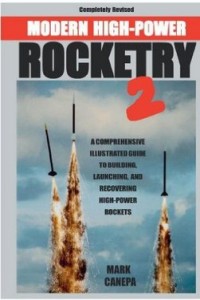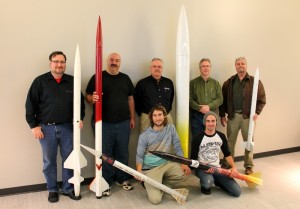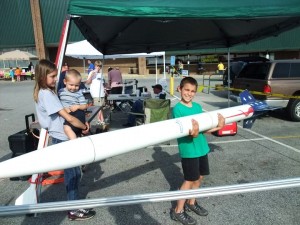 This is a common question people ask once they see larger medium and High Power (HP) rockets. There’s a lot of information to take in when first getting into HP rocketry. This FAQ-blog piece will step you through several of the key concepts of HP rocketry, provide logical steps for dipping your toe into medium and HP, and even help you in getting certified (if you so desire).
This is a common question people ask once they see larger medium and High Power (HP) rockets. There’s a lot of information to take in when first getting into HP rocketry. This FAQ-blog piece will step you through several of the key concepts of HP rocketry, provide logical steps for dipping your toe into medium and HP, and even help you in getting certified (if you so desire).
What Is “High Power Rocketry?”
Before we tell you how to get into HP rocketry, let’s define some terms. One of the best definitions is one by Tim Van Milligan of Apogee Rockets. Tim says,
“The lines between “low power,” “mid power,” and “high power” are drawn by the size of motor you use. Low power is defined as D-class motors and lower, and mid power is generally defined as E, F or G motors. Low and mid power rocketry tend to blur together and don’t require any specific age or ability to fly.
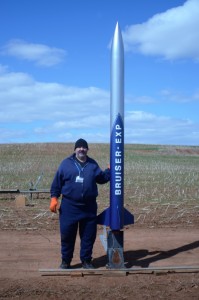 High power is where a true line is drawn, and such motors are any of those with an “H” rating or higher, an average thrust of over 80 N-s or have a “sparky” quality. To fly any of these motors, you need a Level 1 Certification (or be attempting for it) from the National Association of Rocketry or the Tripoli Rocketry Association. A Level 1 certification can be done on either an “H” or “I” motor…”
High power is where a true line is drawn, and such motors are any of those with an “H” rating or higher, an average thrust of over 80 N-s or have a “sparky” quality. To fly any of these motors, you need a Level 1 Certification (or be attempting for it) from the National Association of Rocketry or the Tripoli Rocketry Association. A Level 1 certification can be done on either an “H” or “I” motor…”
TRA or NAR?
Before you can “get into” high power.. you need to first know more about the two parent HPR associations who oversee the hobby, work with the FAA, legislators and other government organizations to keep the hobby safe and legitimized. These two international groups are the Tripoli Rocketry Association (TRA) or the National Association of Rocketry (NAR):
TRA: http://www.tripoli.org/Membership
NAR: http://www.nar.org/NARjoin.html
To fly HP rockets and commercially buy most H and larger HP motors, you need to first join one of these high power organizations. 
NRV Rocketry is a subsidiary of the TRA organization, (we are Prefecture #143 in the US).
Getting Your High Power Certification:
Once you’re a card carrying member of either the TRA or NAR (or even before joining up), you’ll probably want to learn more about high power rocket construction and how building HP rockets differs from model rocketry. Here are some easy to watch videos I recommend from our good friends at Apogee Rockets:
Video : Intro to Level 1 Certification Rockets
Video: Building Your First High Power Rocket – Part 1
For a really good book reference, we also often recommend this comprehensive book.. some consider to be “The Bible” of HPR, “Modern High-Power Rocketry 2”
Engineering Students & Spaceport Prep:
NRVR will not support a Spaceport team that is not fully high power certified. If you’re an engineering or aerospace student wanting to compete in the Spaceport America Cup, we strongly recommend following this TRA/Spaceport video on getting your team’s high power, L1 and L2 certifications in preparation for working on a Spaceport America Cup project.
Picking a Flexible Rocket Design:
While many of our more experienced club members like to design and build HP rockets from scratch, we recommend starting off with an easy going rocket kit. A lot of thought and expertise goes into the designs of these kits, and by starting off with a kit, a free benefit is getting to glean decades of “design wisdom” and pick up great construction techniques in the clear, detailed directions.
For a first time high power rocket, our club recommends getting a multi-purpose rocket design that can fly on both Medium Power motors (F-G size) as well as High Power motors (H and higher).
NOTE: More information on motor sizes and how they related to thrust and total-impulse is here.
Here are a few good rockets that can fly both MP as well as HP motors, giving you the ability to fly at sites both with and without FAA waivers (and HP oversight), giving you the most bang for your buck starting off:
- The Mad Cow Super DX3 (38mm motor, big & awesome)
- The LOC High Tech (38mm, low price, high flying)
- The LOC IV (38mm, an old school favorite)
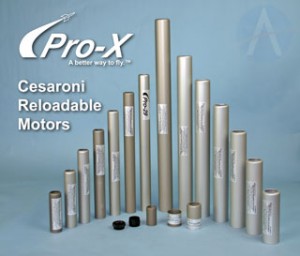 Regarding motor casing sizes, you can go smaller than 38mm (diameter) when doing medium/high power rockets, however if you want the most bang for your buck and not have to buy new reload casings as you move from medium to high power (up through L1 and L2 certifications), then many consider 38mm as the best deal covering the widest ranges of rocket & impulse (thrust power) combinations.
Regarding motor casing sizes, you can go smaller than 38mm (diameter) when doing medium/high power rockets, however if you want the most bang for your buck and not have to buy new reload casings as you move from medium to high power (up through L1 and L2 certifications), then many consider 38mm as the best deal covering the widest ranges of rocket & impulse (thrust power) combinations.
MOTOR SIZE INFO: Old estes A-C motors are 18mm, D-E are 24mm, 29mm is the first size that traditionally begins to reach into into HP (H impulse motors)). However, 38mm can take you from G impulse levels, up into H (L1) all the way thru J (L2) motor impulse levels. With just a couple of key 38mm motor casing lengths (combined with a few spacers), you can use the same motor casings (and rockets) to fly from G, H-I (HP L1) and J (HP L2) motor impulses!
Computer Simulation of your Flights:
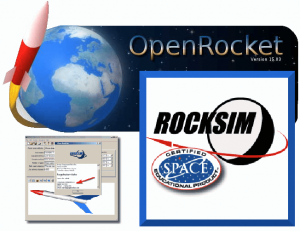 As you move from model (low power) rockets into high power, it becomes much more critical to sim, or run computer simulations of, your rockets and motors before you fly them. The two most common sim packages are RockSim (commerical) and OpenRocket (open source). Both of
As you move from model (low power) rockets into high power, it becomes much more critical to sim, or run computer simulations of, your rockets and motors before you fly them. The two most common sim packages are RockSim (commerical) and OpenRocket (open source). Both of 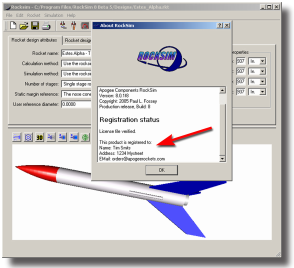 these packages are “parametric design” packages and do a very good jon on helping you build a stable (safe) and pair it with a high power motor that will maximize you chances of getting it back. These are not simple click, drag and fly design programs. They are advanced parametric design and computer model simulators that calculate rocket fight stability, drag, wind, apogee, drift,landing
these packages are “parametric design” packages and do a very good jon on helping you build a stable (safe) and pair it with a high power motor that will maximize you chances of getting it back. These are not simple click, drag and fly design programs. They are advanced parametric design and computer model simulators that calculate rocket fight stability, drag, wind, apogee, drift,landing 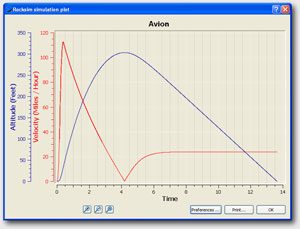 speed/distance, and many many other characteristics of your flight.. and will even tell you what motors you do (and do not) want to buy for a given rocket. They have a somewhat steep learning curve, but there are also tons of tutorial videos our there for it, as well as thousands of existing .rkt (design) files out there for most of the kit rockets in the world (see RocketReviews for thousands of existing rocket designs).
speed/distance, and many many other characteristics of your flight.. and will even tell you what motors you do (and do not) want to buy for a given rocket. They have a somewhat steep learning curve, but there are also tons of tutorial videos our there for it, as well as thousands of existing .rkt (design) files out there for most of the kit rockets in the world (see RocketReviews for thousands of existing rocket designs).
RockSim was the original, complete rocket simulation suite and is really great if you don’t mind spending $120 on it… and then there’s OpenRocket, the open source (free) suite.. almost as powerful ad RockSim, and almost identical in most of the critical features, and you can’t balk at the price! ($0).
When flying medium to hihg power rockets with NRVR, we will often ask you to fill out a Pre-Flight Data Capture Form. These forms prove to the RSO (in charge of range safety) that you actually A) know what you’re doing, and B) know the key flight characteristics of your flight.. and most importantly C) that it will be a safe flight.
If you ever have any design, sim or other rocket/motor questions or issues, please reach out to your club or NRVR members.. they’re there to help. :^)
Motors – Ask Before You Buy:
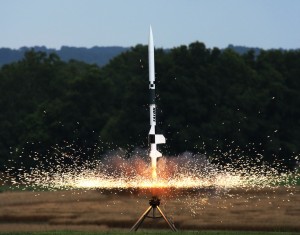 As you get more into HP rocketry, one does not have to spend a lot of money, but the costs can soar almost as high as your rockets! For example, your first HP rocket will run around $80-120. Your first motor casing $30-40. Your first motor reload $25-30. Specialized HAZMAT and other relation shipping $30-50. Various tools, adhesives and extras, $150. TRA/Club annual membership dues, $80-90, etc. And let’s not even talk about any lost or crashed rockets. <ouch!> The good news is though we can help out. Help not only save you some money, but a lot of frustration and hard knocks as you explore the hobby. We’re here to help.
As you get more into HP rocketry, one does not have to spend a lot of money, but the costs can soar almost as high as your rockets! For example, your first HP rocket will run around $80-120. Your first motor casing $30-40. Your first motor reload $25-30. Specialized HAZMAT and other relation shipping $30-50. Various tools, adhesives and extras, $150. TRA/Club annual membership dues, $80-90, etc. And let’s not even talk about any lost or crashed rockets. <ouch!> The good news is though we can help out. Help not only save you some money, but a lot of frustration and hard knocks as you explore the hobby. We’re here to help.
One of the benefits of joining NRVR is that you get added to our nrvr-members email list and can begin asking HP design questions, legal and safety questions, or even show our folks what you’re working on and ask real aerospace experts about the best building techniques or where to get certain hard to find supplies. You’ll have access to all the group’s and VT Aerospace’s decades of experience in rocketry.. and invaluable resource.
Useful Links for Getting Started:
Just getting started, here are a few useful links of rocket vendors, motors, parts and expert sites you should check out and bookmark:
General Rocketry Supply Vendors:
- Apogee Rockets (great supplies and tutorials!)
- Performance Hobbies (one of our local motor vendors)
- Aerocon Systems
HP Rocket/Kit & Supply Vendors:
Expert Forums & Sites:
- RocketryForum.com (decades of great expert info)
- ThrustCurve.org (motor data, stats, tools and more)
- RocketReviews.com (Rocket kit research, reviews, flights)
- TRA Facebook Group
Other Regional Rocket Clubs:
- Heart of Virginia Association of Rocketry (HOVAR)
- Maryland Delaware Rocketry Association (MDRA)
- Northern Virginia Association of Rocketry (NOVAAR)
- South Eastern Virginia Rocketry Association (SEVRA)
- Tripoli Central Virginia #25 (Battle Park)
- Valley AeroSpace Team (VAST)
- Vikings Rocket Society (VRS)
Tips on HP Rocket Construction:
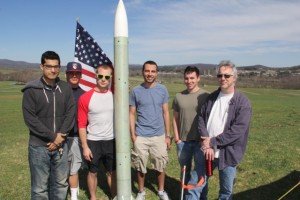 This is a much larger topic for another FAQ blog post, but in a nut shell, start off by checking out some of the tutorial HowToGuides on ApogeeRockets.com, or if you want a short run down that contrasts some of the differences between building the model rockets of your youth, and the modern high power rockets we’re all getting in to now days, then here’s a mail list piece we wrote a few years ago that touches on the big differences .
This is a much larger topic for another FAQ blog post, but in a nut shell, start off by checking out some of the tutorial HowToGuides on ApogeeRockets.com, or if you want a short run down that contrasts some of the differences between building the model rockets of your youth, and the modern high power rockets we’re all getting in to now days, then here’s a mail list piece we wrote a few years ago that touches on the big differences .
We also strongly recommend browsing through the wealth of knowledge in Tim Van Milligan’s Rocketry HOWTO video series.. a very useful library of info.
Hang Out With With Us:
Lastly, NRV Rocketry is here to help you. Check out our calendar to see when our next launch or meeting is or come hang out with us! Even if you’re not a member and have some questions about the hobby, please either flag us on our public mail list here, join our facebook group or email the officers directly at officers(at)nrvr.org..
We’re here to help you get off the ground!
